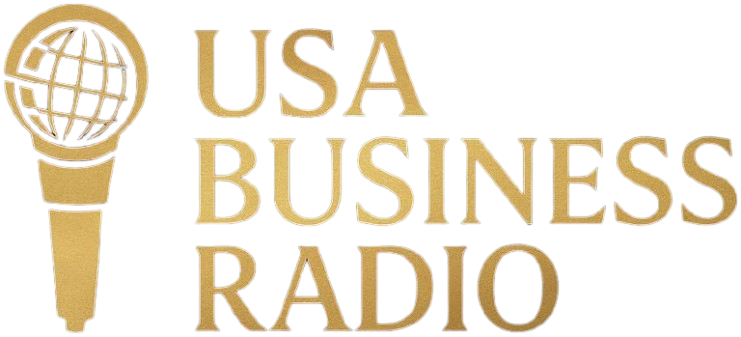By Bob Kelleher, Special for USABR
A growing body of data suggests that the traditional annual or twice-yearly performance appraisal may have outlived its usefulness. Today, information is both transparent and instantaneous, goals are mutable, and organizations of all kinds are ditching the paper trail.
The problems with performance appraisals are wide-ranging. Not only do they frame the conversation in a way that underscores the power differential, they place the burden of “policing” the process on managers (and on upper management and HR, who “police” managers by chasing down delinquent forms). They have also been more “rearview mirror“ (focused on the past) rather than “windshield” (focused on plans to develop employees’ skills and engagement); a yearly or twice-yearly conversation is always dependent on trailing indicators.
Perhaps more tellingly, goals set in January are subject to change as new organizational priorities emerge. In a best-case scenario, what often happens is that the manager must give the employee he or she is reviewing a “mulligan” of sorts, because the goals are dated. Then, the goals are either abandoned, or simply pushed into the next review period with little revision.
So how can we evolve toward a more efficient and relevant process?
Informal, Frequent, and Brief
More frequent and less formal touch points throughout the year are the key. In addition to frequency, brevity seems to be attractive to both managers and employees burned out by lengthy, bureaucratic forms. Key to this shift is a renewed focus on the critical relationship between managers and employees. According to Gallup, 70 percent of an employee’s engagement is dependent on satisfaction with their manager. Strengthening communication between managers and employees has never been more important. It is a necessary step in demonstrating empathy –something that the once-a-year performance appraisal simply doesn’t accomplish.
The very name “performance appraisal” has an intimidating ring to it. It highlights the hierarchical nature of the conversation. Why not shift the focus to something that is more representative of the actual objective? For the purposes of argument, let’s stick with something generic: call it a Career Roadmap or an Employee Development Plan. (I like this type of phrasing because it emphasizes the individual nature of engagement.)
Within this framework, there is still a need for goal-setting. But goals should be fluid and frequently updated ‒ quarterly at a minimum. Crucially, managers and employees should both strive to get to know one another well enough that any engagement challenge or necessary change of course can be brought up and openly discussed. This means that the onus for initiating check-ins is shared, and accountability is mutual.
In addition, workforce experts have universally concluded that the practice of ranking employees on a fictitious bell curve is dated at best if not destructive. A system that requires managers to classify a broad cross-section of staff as average overlooks the differentiators that constitute their potential. Instead, let managers do their own benchmarking when pay increases are in the offing, rather than making them force-rank employees during a performance appraisal.
Quarterly Milestones
You may be wondering exactly how to replace your annual performance reviews with a less formal, vastly simplified framework. Sanborn Head and Associates, a New Hampshire-based consulting engineering firm, and Beacon Communities, a Boston based property development and management firm. These two firms have been trailblazers in this new landscape, and have implemented a quarterly check-in process below in lieu of traditional performance appraisals.
During the first quarter, managers take 30-45 minutes to learn the employees’ work preferences. Who works best together, and why? Who likes public recognition, and who might be embarrassed by it? Who is quick with an opinion, and who is more contemplative? Preferences like these may change over time, but they have a real impact on individuals’ performance and engagement in their jobs. Sanborn Head and Beacon leveraged the Engagement Accelerator (eeaccelerator.com) a 13-question online assessment, for this purpose. The tool provides a snapshot of work preferences along with talking points for managers.
Alignment is the focus of the second-quarter check-in. An engaged employee is aligned in three areas: how much they like the job; how good at the position they are; and whether the job function is valued or needed by the organization. Using a simple Venn diagram, employees are asked to literally illustrate their perceived degree of alignment. This is a friendly, non-threatening way to broach the topic of job fit.
| I’m not doing what I really like to do; I’m not sure I’m even good at doing what I’m asked to do. | I like some of what I’m doing, but doing a lot of things I don’t particularly like; I’m not really leveraging my skills. | I like most aspects of my job; I believe I’m really skilled in most of what I’m being asked to do. | I really like what I do, and believe I’m really good at my job; it maximizes my skills. | I love what I do. My skills are a perfect match for this position. |
In the third quarter, conducting a stay interview, which provides the opportunity to make changes to an individual’s job before they become a flight risk. (Exit interviews are common. But like performance appraisals themselves, they rely on trailing indicators.) Typical stay-interview questions include “What is one thing you most enjoy about your job?” and “What might make you consider leaving?”
The fourth quarter check-in should focus on development goals and overall engagement. What were the employee’s three main accomplishments from the past year? If goals have been set during prior conversations, don’t hesitate to re-assess them in the light of shifting priorities. If you choose, you can use this meeting to set additional development goals, like cross-training, mentoring, or completing a degree… but remember that these too should be re-evaluated as necessary.
An End to the “Blizzard of Paper”
One of the primary benefits of a comprehensive overhaul of the performance evaluation is that it removes many of the arbitrary strictures that make the process so arduous for managers and HR alike. Moving away from the traditional performance appraisal model means that managers are no longer collecting data for a massive file on every individual. Instead, the new model should keep documentation light… and digital.
A series of more frequent, less time-consuming, and more targeted meetings fosters clear dialogue among teams. It recognizes that engagement is not a fixed state, and “performance” is not a series of boxes to check. It’s time for organizations to graduate from the “tried-but-not-really-true…” to a new and more effective paradigm.
ABOUT BOB KELLEHER
Bob Kelleher is a best-selling author, keynote speaker, and consultant and travels the globe sharing his insights on employee engagement, leadership, and workforce trends. Bob is the author of the best selling book, LOUDER THAN WORDS: 10 Practical Employee Engagement Steps That Drive Results, CREATIVESHIP, A Novel for Evolving Leaders, EMPLOYEE ENGAGEMENT for Dummies, and the just released I-Engage, Your Personal Engagement Roadmap.
Bob is also the founder and president of The Employee Engagement Group, a global survey, products, and consulting firm working with leadership teams to enhance their leadership and employee engagement effectiveness.




